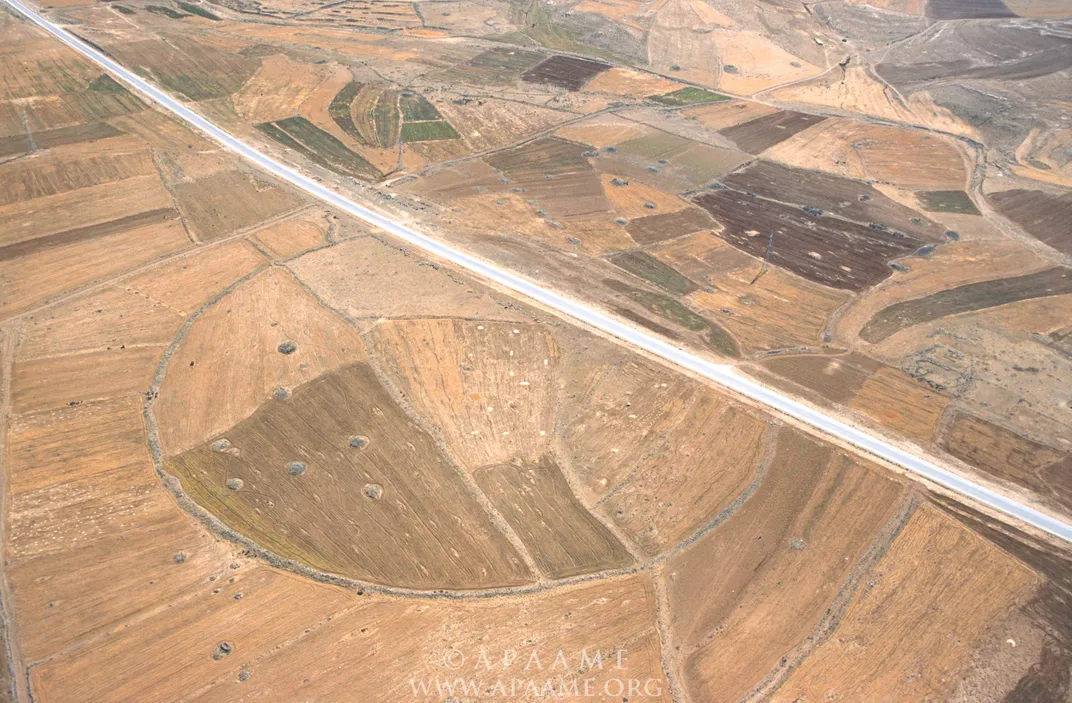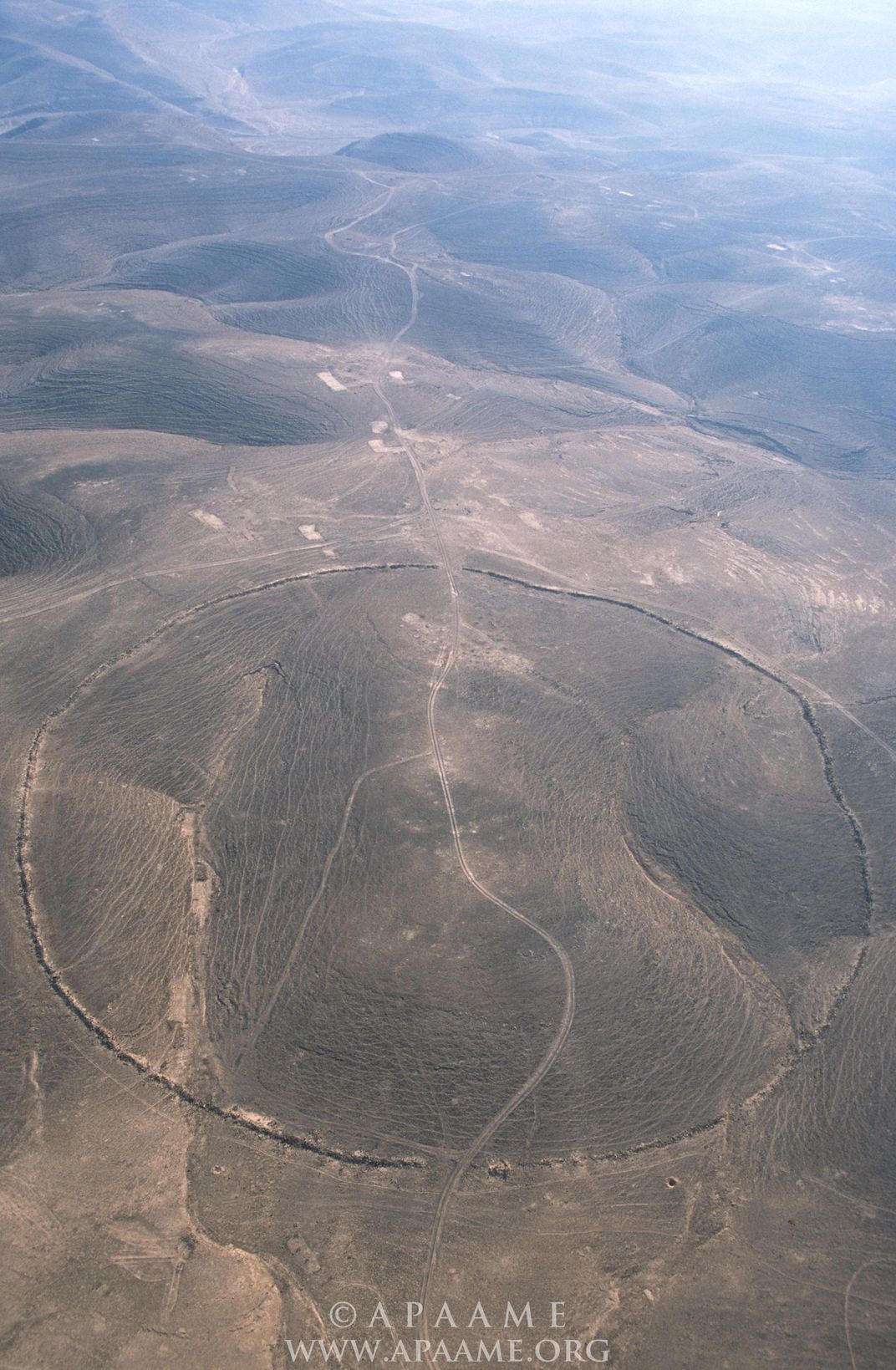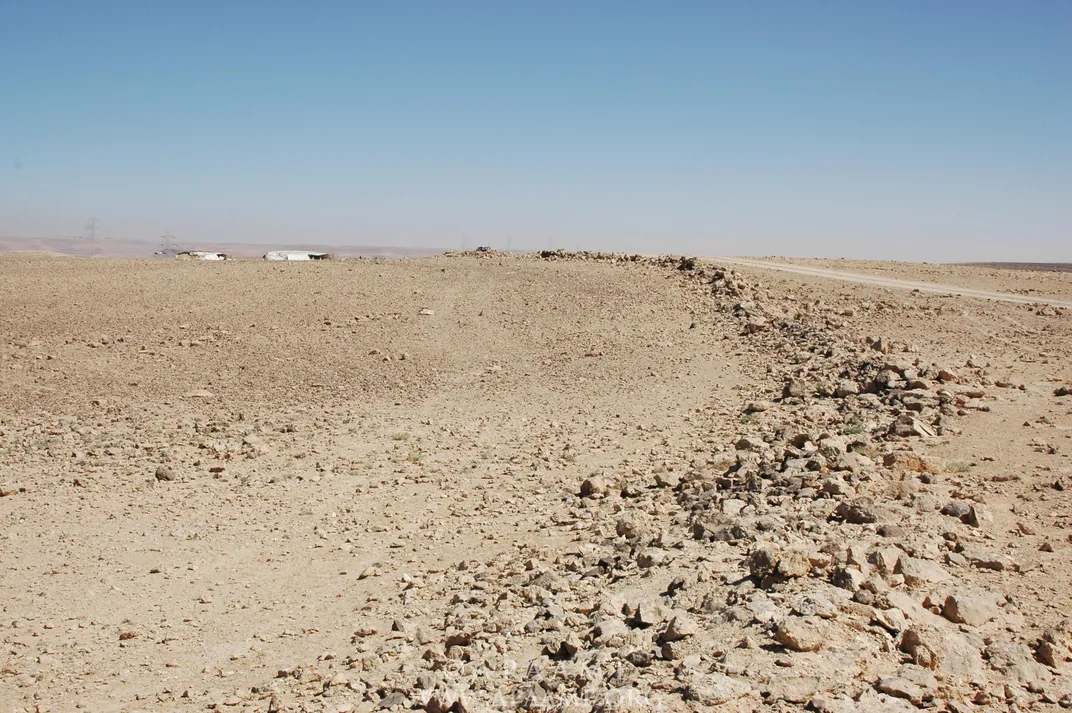These Giant Circles in the Mideast Are One of the World’s Last Mysteries
Archaeologists have found more than a dozen ancient circles in Turkey, Syria and Jordan—but don’t know why they were built
/https://tf-cmsv2-smithsonianmag-media.s3.amazonaws.com/filer/c7/70/c7705785-75cb-4873-bafb-4963d444ef3e/apaame_20040601_dlk-0041.jpg)
You may have heard of the Nazca Lines, a series of geometric patterns, stylized sharks, hummingbirds, monkeys and other animals sketched into the the desert of southern Peru. These aren't the world's only intriguing, giant designs—across the ocean, the arid landscape of the Middle East contains its own mysterious structures best observed from the air.
Often found in lava fields, the stone structures include wheels, kites (shapes used to funnel animals to an area, probably for slaughter) and walls that streach for several hundred feet, according to LiveScience.com. But most intriguing are structures that archaeologists call "Big Circles."
They are at least 2,000 years old, made of stones piled just a few feet high that sketch a circle about 400 meters (1,312) feet in diameter across the landscape, reports Owen Jarus for LiveScience.com. These circles were discovered in modern times by aircraft flying in the 1920s, but have recently gained more attention through the work of David Kennedy, a researcher at the University of Western Australia and his long-term aerial photography project documenting archeological sites in the Middle East.
“It was 60 years before anyone noticed [the circles] again, and only in the last 10 years have we started flying over every bit of the country looking for more,” Kennedy told The Washington Post. He and his colleagues have found 12 circles in Jordan, one in Syria and two in Turkey. An ancient Roman road cuts across one, so they likely predate the Roman Empire.
But researchers still have no idea who built the circles or why. The walls are too low to keep in animals, and their precise shape wouldn’t be necessary for pens.
Examining the circles on the ground would reveal some of their secrets, but difficulty gaining access to these remote sites makes aerial surveys easier. Kennedy and his colleages published their findings last year in the journal Zeitschrift für Orient Archäologie. Recently, they published high-resolution images of 11 of the Big Circles. LiveScience.com reports:
In the case of those circles that [are] near-precise circles, it would have required at least one person as 'architect,'" Kennedy said, adding that this architect could simply have tied a long rope to a post and walked in a circle, marking the ground as he or she moved around. "That would also explain the glitches [in the circles] where the land was uneven," as the architect wouldn't have been able to keep walking in a perfect circle at those spots.
The new photographs, including some taken from the ground in Jordan are up on the project’s Flickr page. A few are posted here with permission:



